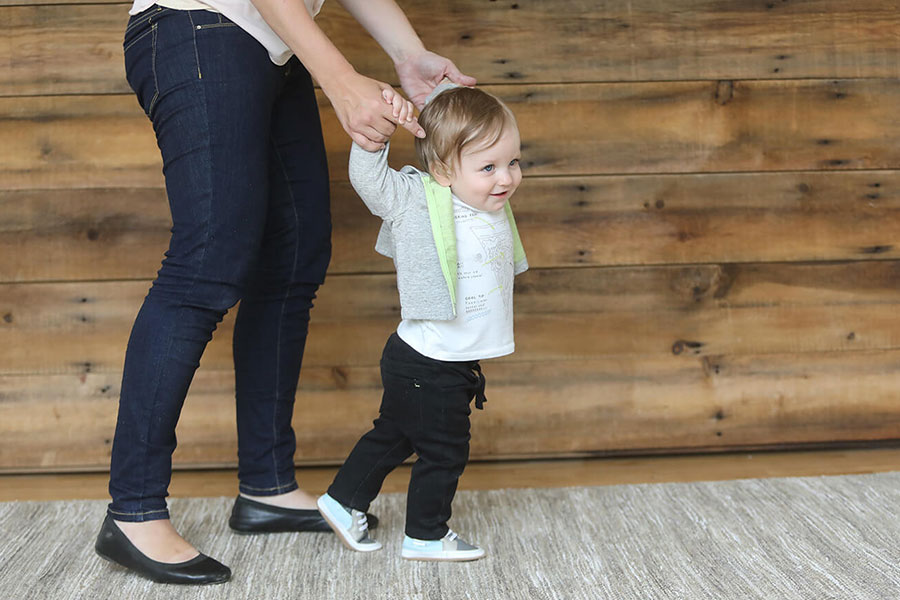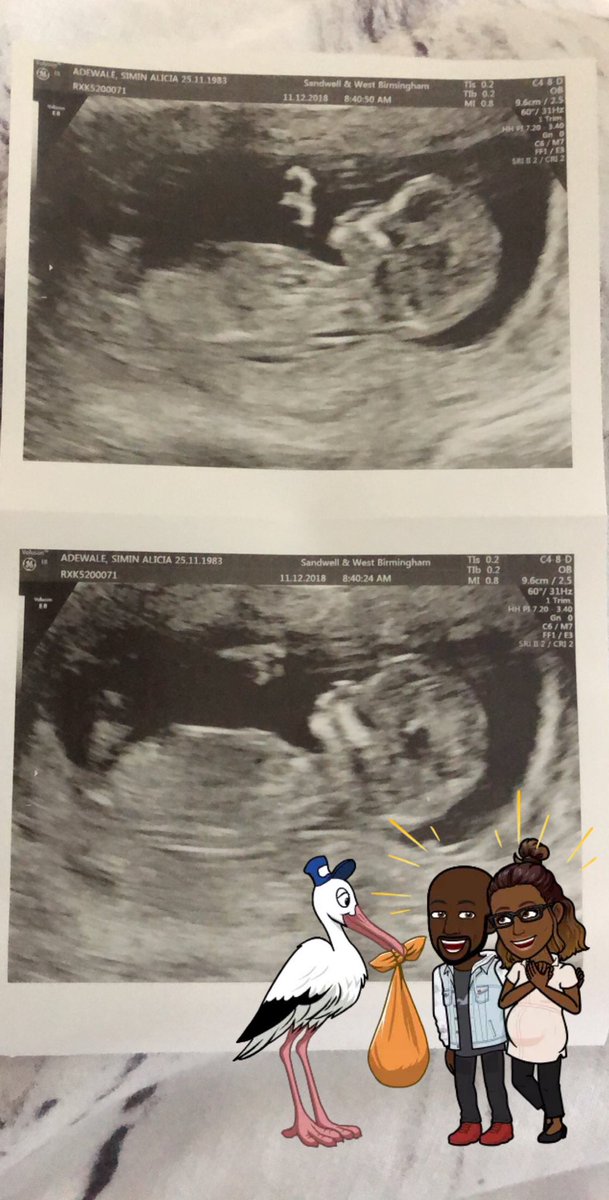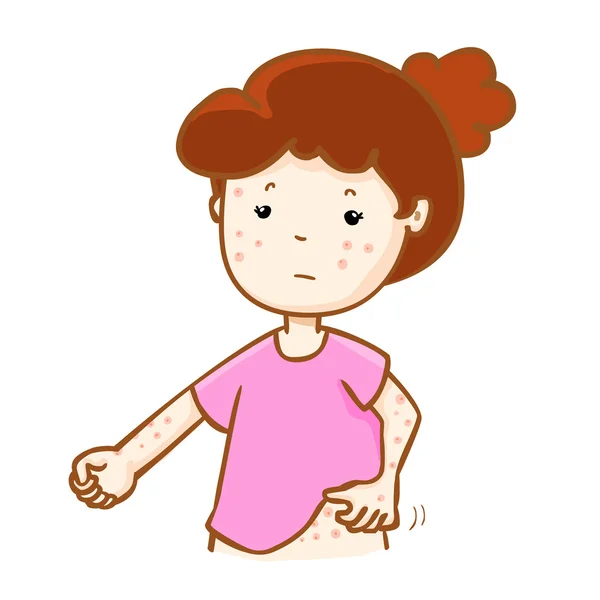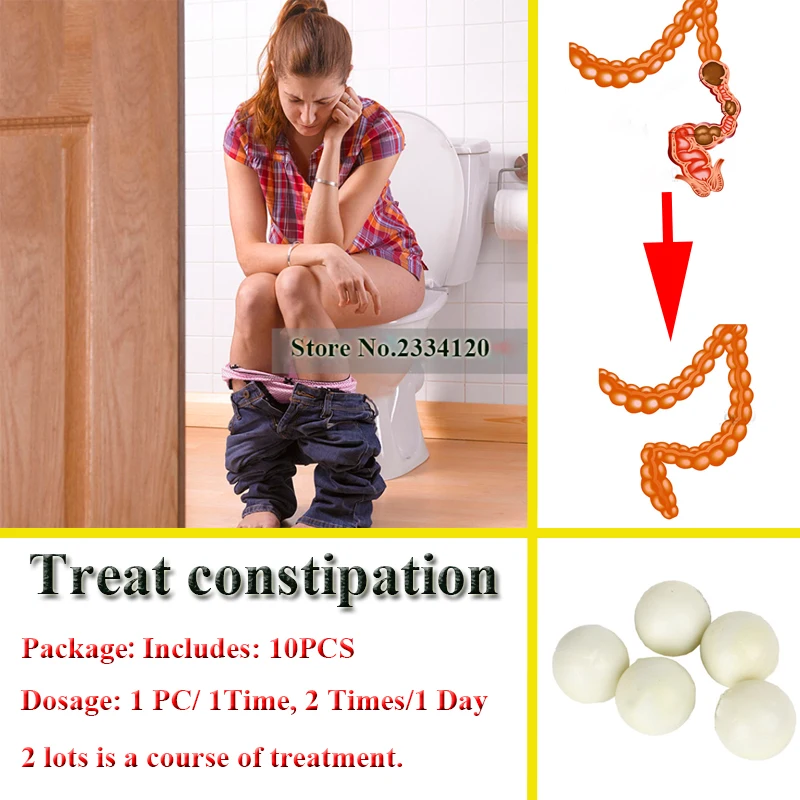When to start walker for babies
When Is The Best Time For A Baby Walker
Skip to content
13 Oct 2021
When Is The Best Time For a Baby Walker
As a parent nothing makes you more proud than to see your baby grow and learn new skills. From your baby’s first smile to their first time crawling. All these major milestones are wonderful signs of your little one’s development and path of discovery and freedom. As your baby continues to grow, the next major milestone you’re probably keen to see is your baby taking their very first steps.
At this stage of your baby’s life, a baby walker can be a great tool and device to help your little one on that path. Although you might be wondering “When can my baby start using a baby walker?.
In this guide we are discussing the things to take into consideration and some of the signs that show your baby is ready to start using a baby walker.
What Are Baby Walkers?
Baby walkers are devices designed to give babies mobility while they're learning to walk. They are designed to provide additional stability, which allows them to maneuver and get around the house. Even though baby walkers encourage mobility, it’s important for parents to understand that the developmental pace of every child is different. Some babies start walker around 9 months and some after 12 months. Your baby will start walking on their own when they are ready.
How To Safely Use Baby Walkers?
When using a baby walker, always make sure you remove (sharp) objects, stumbling blocks or anything else that might cause injuries. It’s important to never allow your child to use a baby walker unattended. Always make sure you’re within arms reach so that you can guide your little one and prevent any injuries from taking place.
Some studies show that using a baby walker might cause babies to reach their walking milestone later than others who don’t. This is usually the case when babies do not spend enough time on the floor crawling and exploring. A baby walker should not replace a child’s natural process of development - Allow your baby to spent enough time to play, roll and crawl around.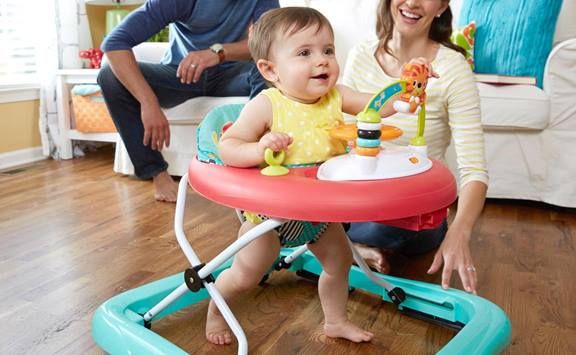 Essentially, don’t allow your little one to sit in their baby walker for hours. 10 to 15 minutes a day (or every other day) should be a good amount of time.
Essentially, don’t allow your little one to sit in their baby walker for hours. 10 to 15 minutes a day (or every other day) should be a good amount of time.
When Is the Best Time?
- Head stability: Your baby should have full control of their head and be able to hold his or her head up without any additional support.Babies usually start holding their head up by 6 months - which is when they gain enough strength in their neck and upper body and are able to sit up with minimal or any support.
- Age: The recommended age is 6 to 8 months before your baby starts using their walker.
- Mobility: Your baby should have some level of mobility developed already. For example, your little one should be a good crawler and able to get around or have the ability to stand in their crib or on their own.
- Positioning: When using a seated baby walker it’s important that your baby’s feet are able to touch the floor.
 If your baby’s feet are hanging while sitting in their baby walker it might not be time for them to use this yet.
If your baby’s feet are hanging while sitting in their baby walker it might not be time for them to use this yet. - Curiosity: It’s important for your little one to have developed some level of curiosity and the need to explore and perceive things around them.
| Sign Up for exclusive updates, |
- Baby Gear
Right Age for Baby to Use a Walker & Safety Precautions
Now that your baby is showing rapid signs of growth, you must be keen to see him take his first steps. Walking is an important event in the baby’s life and the parents, too, as it signifies independence.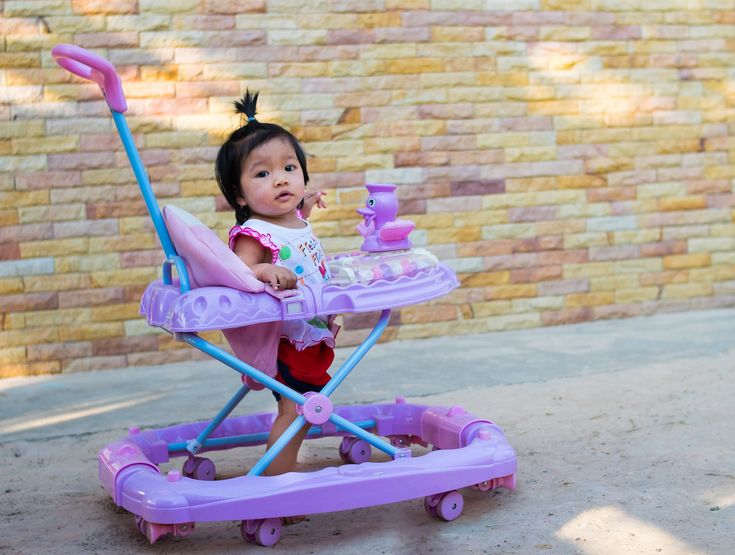 To help your baby along this path of discovery and freedom, you may want to encourage him by bringing home a walker.
To help your baby along this path of discovery and freedom, you may want to encourage him by bringing home a walker.
Video: When Your Baby Can Start Using a Walker (Plus Precautions while Using)
When to Let Your Baby Start Using a Baby Walker
While there is no fixed appropriate age for a baby to use a walker, the baby’s strength, development and size will have to be considered before making a decision. Walkers are usually designed for babies between the ages of 4 to 16 months. Apart from this, the baby needs to be able to hold his head up quite steadily and have his feet touch the floor when placed in the walker, to be able to use it.
Advantages of Baby Walkers
Here are a few pros of buying a walker for your baby:
-
Engaging and Inspiring
Most baby walkers are fitted with simple toys or attractions to keep the baby engaged and busy.
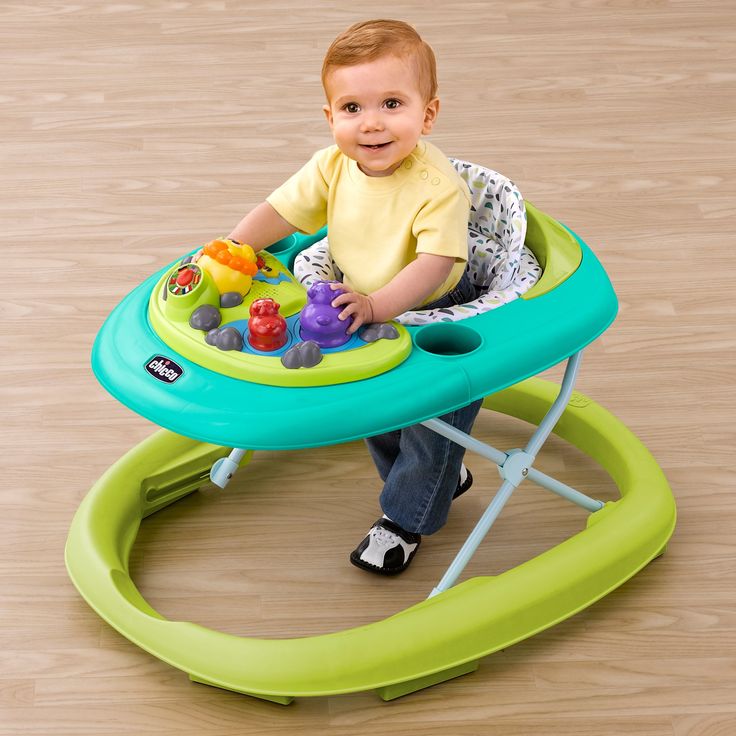 They are designed to stimulate mental growth and provide visual stimulation, too. A walker allows you to carry on with your daily tasks since the baby remains engaged with the attached toys.
They are designed to stimulate mental growth and provide visual stimulation, too. A walker allows you to carry on with your daily tasks since the baby remains engaged with the attached toys.
-
Encourage Babies to Walk
With support at hand, your baby may be encouraged to take his first steps. It helps the baby understand how the standing pose will aid walking, and he will make attempts to get going on his own.
Disadvantages of Using Baby Walkers
Here are a few disadvantages related to the use of baby walkers:
- Babies using walkers may actually reach the walking or crawling milestones later than others who don’t.
- Your baby should follow the roll-sit up-crawl-walk routine for which it is important for him to stay on the floor. This workout helps in strengthening all the muscles needed to stand or walk. A walker may prevent your baby from doing so and impair normal development.
- Objects which are out of reach for a crawling baby may come within reach of a baby in a walker, and this could be the cause of injury.
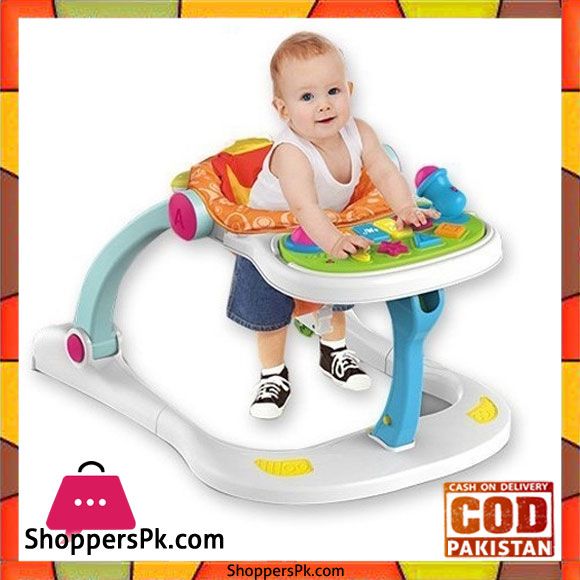
- Your baby’s toes and fingers could be injured as the walker’s design may have folding parts or hinges.
- A walker with wheels reduces your reaction time if it picks up speed and can lead to an accident.
Does Baby Walker Help Balance?
The natural process of rolling over, crawling, standing, and then walking teaches a baby how to balance himself. When you allow the baby to use a walker, the baby’s position causes him to lean forward from the hip. The child does not have to balance himself in a walker. Whether a baby tips to the side or forward, the walker will prevent him from falling. The baby will need to learn to balance himself, afresh.
Precautions to Take While Making Your Child Use a Walker
It is highly recommended that you address some baby walker safety issues before your child makes active use of one:
• Ensure that the baby walker is used on a flat and even surface only.
• Keep the baby and walker away from staircases and water bodies of any kind
• It is mandatory for you or a responsible adult to be around while the baby is using the walker.
• Remove sharp and pointed objects or surfaces from the vicinity. Heavy or breakable objects should be moved into another area.
As we have seen, baby walkers have their own pros and cons and may often raise the question “are baby walkers safe?” As an alert parent, you will have to take care, so that the advantages can be driven home while the disadvantages can be avoided. It is, after all, a parent’s responsibility to make sure that the baby’s development is unhindered due to the use of such objects.
Also Read: Baby Walking Signs
Walkers and jumpers: friends or enemies?
What do Chelyabinsk orthopedists think about them: pros and cons of popular devices. How not to harm the baby? Safety regulations
In the USSR, they were discontinued: it was found that they fix the wrong position of the feet and hip joints. In Canada, they were withdrawn from sale: they allegedly pose a serious danger to babies. But half a century later, they again conquer the world. Walkers and jumpers, bright, funny, so comfortable .... Friends or enemies to your baby?
Walkers and jumpers, bright, funny, so comfortable .... Friends or enemies to your baby?
The health and development of a baby directly depends on how much and variously he moves, and what emotions he experiences. Best of all - in the hands of my mother: you can turn your head, touch it with a pen, try it on the tooth .... But, alas, mom needs her hands for a lot of other things. And it seems a good decision to buy a special device that will free both mother and entertain the child. So walkers appear in the house.
Baby walker - a device that allows the baby to move without parental assistance. This is a frame on wheels, inside of which a special “saddle” for the child is fixed. The child sits in this saddle and rides around the apartment, pushing off the floor with his feet.
— Walkers have their pluses and minuses, says Alexander Semyonov, traumatologist-orthopedist of ChDOKB. “Mostly, there are pluses for the mother: she has free hands, she rests from the baby.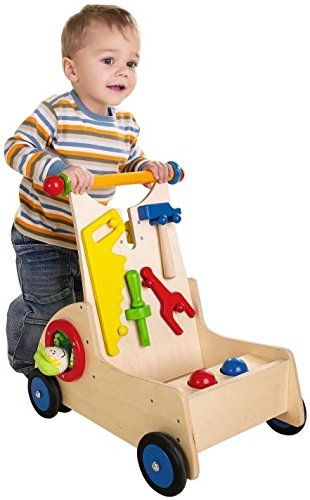 But for a child, there are still more disadvantages - putting in a walker affects the position of the leg, a child in a walker refuses to walk on his own, does not learn to crawl, he is already comfortable, the walkers support him. But from a medical point of view, this is wrong.
But for a child, there are still more disadvantages - putting in a walker affects the position of the leg, a child in a walker refuses to walk on his own, does not learn to crawl, he is already comfortable, the walkers support him. But from a medical point of view, this is wrong.
So, on the one hand, baby walkers open up a new world for the baby, transferring from a horizontal position to a vertical one, which, of course, has a positive effect on his intellectual and emotional development. Walkers satisfy the child's need for movement and at the same time do not allow reaching dangerous objects, protect against sharp corners and falls. But in these pluses, the minuses are also hidden: without learning how to fall correctly, the baby will not learn to group when falling, to protect his head from a blow. He does not learn caution either, because he does not feel pain when he hits a wall or a corner. In the future, these "failures" can lead to serious injuries. Walkers also have a negative effect on the function of the cerebellum: getting used to the support, the baby does not learn to balance.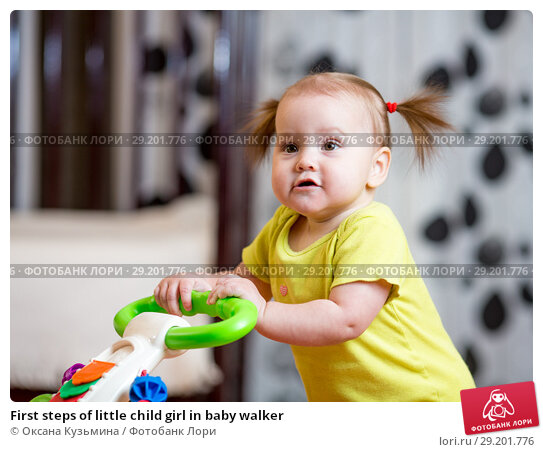 And when he then begins to walk on his own, he often collapses and falls. Finally, a prolonged load on fragile legs can lead to their deformation, and overstrain of the back muscles - a constant vertical position and the inability to change it on your own - to a curvature of the spine.
And when he then begins to walk on his own, he often collapses and falls. Finally, a prolonged load on fragile legs can lead to their deformation, and overstrain of the back muscles - a constant vertical position and the inability to change it on your own - to a curvature of the spine.
— When parents keep a baby in a walker for a long time, he starts walking on his toes, and this is the wrong position of the foot, - the expert notes. - Therefore, if parents want to put the baby in a walker, they need to remember that walkers can be used from 6 months, and by this time the child should sit up and hold his back on his own. The time that can be spent in a walker without harm to the health of the baby is on average up to 40-60 minutes per day. And of course, it is necessary to accustom a child to a walker gradually, starting from 3-5 minutes.
Don't lose sight of your baby in a walker. Walkers can get stuck in the doorway, and when moving from one floor to another, for example, from linoleum to carpet, the structure can roll over with the baby.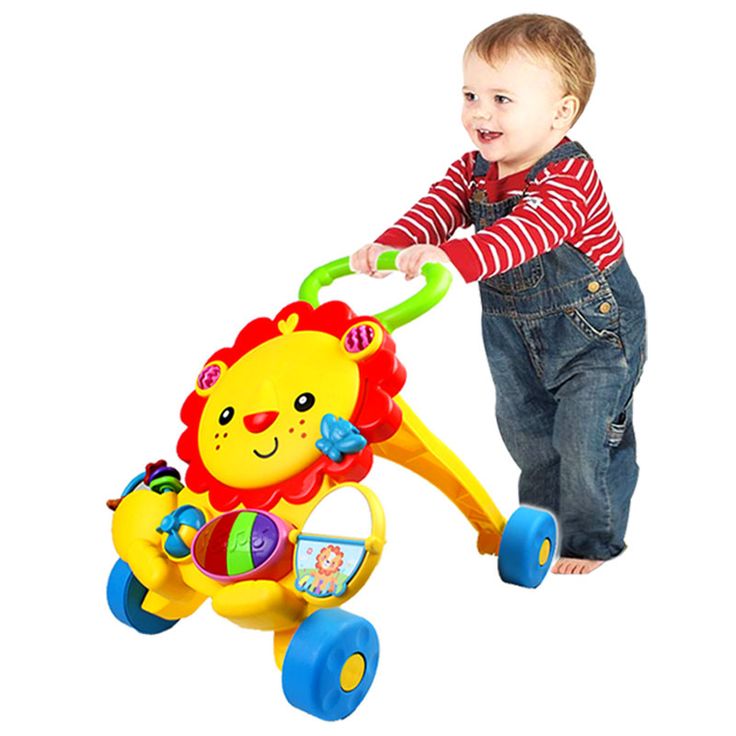 And this is much more dangerous than if the child fell himself. By the way, the child is able to develop a decent speed in a walker: up to 10 km/h! Therefore, the choice of walkers must be taken very seriously.
And this is much more dangerous than if the child fell himself. By the way, the child is able to develop a decent speed in a walker: up to 10 km/h! Therefore, the choice of walkers must be taken very seriously.
Ideal walker has a wide, stable base and many wheels around the perimeter, a deep, wide seat with a soft inner bumper and a high rigid back. It is also possible to adjust the height of the seat according to the height of the child.
Jumpers are another popular device.
Baby jumpers - a special seat, similar to a kangaroo backpack, with a high chest, back and springy straps. Usually jumpers are hung in a doorway. The kid hangs, touching the floor with his feet, and pushing off with his legs, he can bounce a few centimeters.
— I have a more loyal attitude towards jumpers, — Alexander Semenov admits, — this device also unloads the mother, but at the same time there are pluses for the baby himself: jumpers stimulate coordination, the child in them can push off the floor, jump, turn, and while experiencing a lot of positive emotions.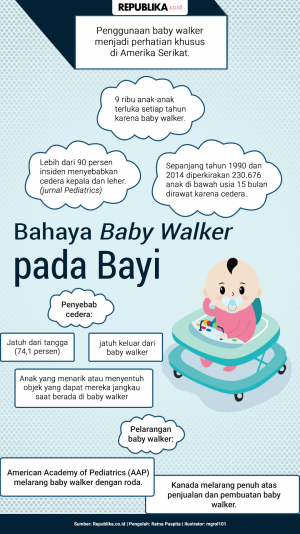
So, jumpers develop leg muscles, stimulate the vestibular apparatus. It is not difficult to understand whether the baby has grown up to them. Place the child on a hard surface, hold under the armpits. If the baby begins to actively push off from this surface, bend and straighten the legs, and this usually happens at 4-5 months, then you can introduce jumpers and live for 15-20 minutes for your own pleasure. Claims to the jumpers are almost the same: violations of muscle tone, squeezing of the perineum with the wrong design. In addition, in jumpers, the child pushes off the floor with both legs at once, and then, starting to walk on his own, tries to do the same. And often falls.
When choosing jumpers, pay attention to the seat: it should be deep, ideally fix the child to the armpits, have a rigid orthopedic back. "Jumping" possibilities depend on the type of belts that are attached to the seat. The best option - the belts are connected to the spring, adjustable in length.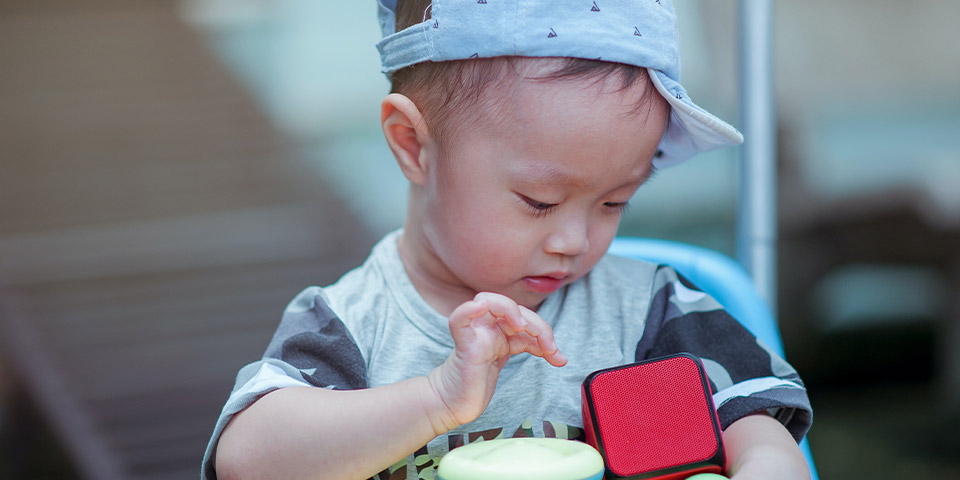
Despite all the disadvantages, both mom and baby like walkers and jumpers - this is an interesting new toy with which you can explore the world. The main thing is to keep the child in sight, observe safety precautions and keep track of time. But the main criterion for the duration of the use of walkers and jumpers should be the mood of the baby. If he is tired, capricious, then it's time to move on to other activities.
- Category: Useful information
When should I put my baby in a walker?
Many parents ask quite a reasonable question: when can you put your child in a walker? So don't let it be too late and don't start early. Many parents have noticed that babies grow really fast. At six months, they begin to actively crawl, and in every possible way strive to stand on their legs. They do not succeed, because the vestibular and musculoskeletal apparatus of the body is not sufficiently developed. But, for this purpose, the industry came up with a special assistant - a walker. They come in different designs, but all are aimed at achieving one goal, helping the baby to get on his feet easier and learn to walk.
They come in different designs, but all are aimed at achieving one goal, helping the baby to get on his feet easier and learn to walk.
When can children buy walkers?
Most of the devices consist of a special stable frame on wheels and a suspension in which the baby is placed in an upright position. Thanks to walkers, the baby can safely move not only around the room, but throughout the apartment, if there is no high threshold between the rooms. Actively develop leg strength and endurance. The design, as a rule, is calculated from 6-12 months of life.
Pediatricians are in solidarity with the manufacturers, it is dangerous to start a baby before 5 months of age. This can cause irreparable harm to the body. Therefore, answering the question: at what age can a baby walker? You can answer with confidence as soon as he learns to crawl confidently, and will make the first attempts to stand on his feet.
Almost all models that can be bought in the store have the following useful functions in practice:
- if the design provides for a handle for parents, then the walker can successfully replace the stroller at home, helping to control the movement of the fidget;
- the presence of musical devices on the walker will help develop an ear for music and entertain the baby during training;
- a useful feature is the presence of a small table on a walker;
- The wheelchair is so comfortable that your little one will love sleeping in it.
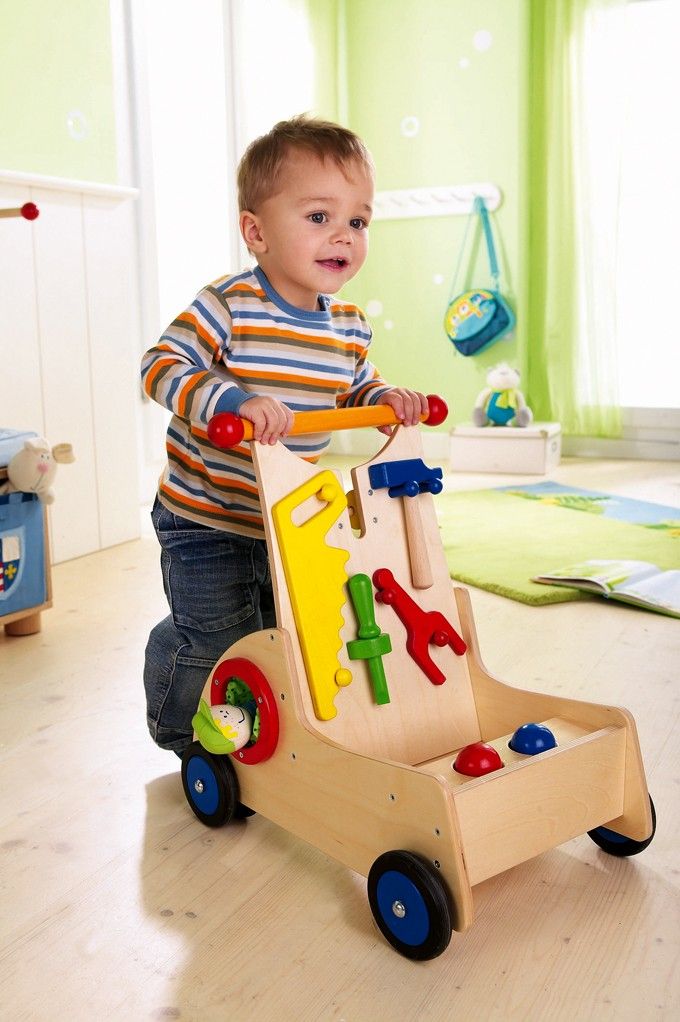
At what age can a walker with musical accessories be used? From the earliest and acceptable age for walkers, from 6 months of a baby's life. Such additions not only entertain the little person, but also help him in the development of intelligence and fine motor skills of the fingers.
An important point
It is not so critical what time the child is placed in the walker, the main thing is that the device has additional adjustment possibilities. The baby should be in suspension so that the legs in a fully extended state with the whole foot touch the floor. Only in such a properly adjusted state will the walker bring maximum benefit.
At what age can a baby walker? Not earlier than 6 months. But, if it is your baby who is prone to early development, and shows all the signs of being ready to start walking upright at 5 months, as an exception, you can start using the device a little earlier. But, the first trials should be short in time and with rest breaks.